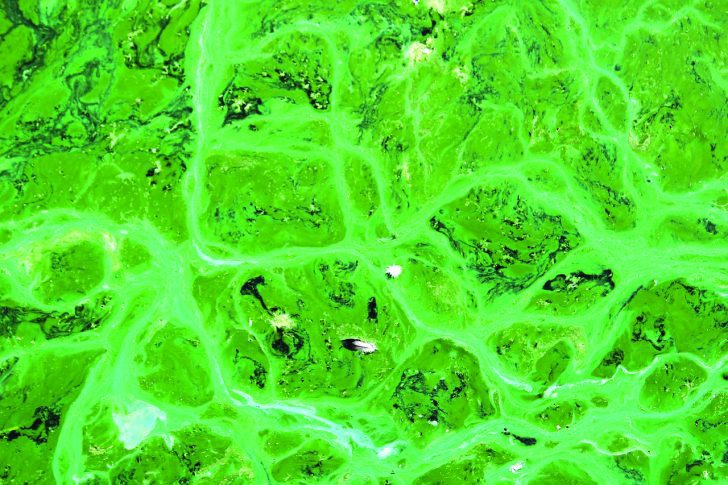
Two kinds of algal blooms cause the most damage: red tide and blue-green algae. Red tide originates in the Gulf of Mexico or Atlantic Ocean’s salty waters while blue-green algae occur in freshwater bodies and marine environments.
Both red tide and blue-green algae hurt Florida’s birds, wildlife, and people. These two outbreaks can be independent of one another, but together they wreak compounding havoc. Both deplete water of vital oxygen, which in turn suffocates fish, mammals, and plants. Dying organisms make the problem worse by releasing additional nutrients and depleting the water column of even more oxygen. Sometimes opportunistic birds will eat contaminated fish and later become ill or die. When there is a lack of available prey, birds must expend more energy and travel farther to find food.
People must avoid areas with active algal blooms; otherwise they risk respiratory impacts, skin-contact issues, and more. They must also avoid eating fish and shellfish from areas with blooms.
Both types of algal blooms are exacerbated by a warming climate and high levels of nutrients in our waterways. The sources of nutrient pollution aren’t new: local stormwater runoff, lawns, septic tanks, agricultural runoff, and sewage spread on fields. All of this ends up entering waterways and exacerbates red tide and blue-green algae.

· Build the water infrastructure needed to reduce harmful discharges to the east and west coasts and to restore the north-to-south flow of water through the Everglades;
· Investment in water quality projects and programs to clean excess nutrients from our waterways;
· Guarantee robust and reliable funding to prevent the starts and stops that hamper restoration efforts;
· Updates and more stringent implementations to regulatory programs already on the books;
· Restore water management district budgets; and
· Investment in Basin Management Action Plans to reduce nutrient loading into our waterways must be a priority moving forward.
